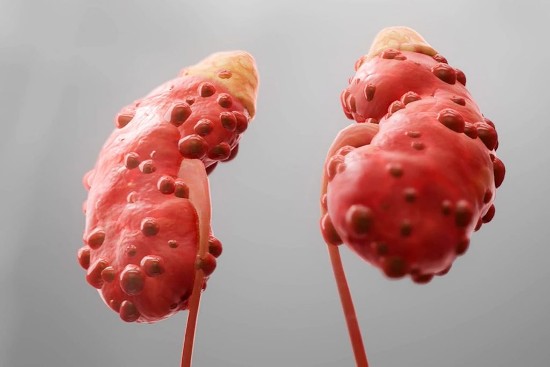The human patient was brain dead and the family had given permission, so a surgical team from New York University’s Langone Health tried something never done before. They attached a kidney harvested from a pig to blood vessels outside the body of a woman who had been taken off life support and was being sustained by a ventilator. The transplanted kidney had been genetically altered to minimize the likelihood of rejection. This experimental procedure may prove to advance xenograft technology and increase available organs for human patients.
Pigs have been singled out as the most suitable animal for growing transplantable xenografts, animal tissue that can be used with humans. Genetically altering the organ to make it human-compatible is a primary goal of xenograft research. And in this case, the attached pig kidney proved to function normally, filtering waste and producing urine, with no signs of rejection.
In a New York Times article, Dr. Dorry Segev, Professor of Transplant Surgery at Johns Hopkins School of Medicine, described the surgery as “a big, big deal.” Why? Because today in the United States more than 90,000 people are on kidney transplant waiting lists and 12 are dying daily. And that number doesn’t include the more than 500,000 who require regular dialysis to treat chronic kidney failure.
The donor was a genetically engineered pig with a kidney that had human characteristics to its cellular structure. This, hopefully, would make it compatible with a human recipient but also would likely not be rejected by that person’s immune system. The Director of the Langone Transplant Institute, Dr. Robert Montgomery, stated that such genetically engineered pigs “could potentially be a sustainable renewable source of organs.”
The Chief Medical Officer of LiveOnNY, Dr. Amy Friedman, responsible for transplant procurement, stated in the Times article that she believes genetically engineered pigs could grow hearts, livers, kidneys and other organs. She notes, “It’s truly mind-boggling to think of how many transplants we might be able to offer.”
Today in the United States, pigs are raised for meat with more than 100 million slaughtered every year. A dedicated pig population bred quite separately from other pigs could facilitate the widespread use of xenografts in addition to harvested organs from human donors and meet the needs of hundreds of thousands on waitlists for kidneys, livers, hearts and lungs.
In the Langone procedure, the kidney attached to the patient, who was a registered organ donor, was maintained externally. The next step would be to place a transplant within a recipient and see if the interaction of the organ with the body’s immune system would be equally effective.
Could a pig used for transplants pass along a virus? Properly screened and bred for this one purpose, it is highly unlikely that a pathogen could jump from pig to human through a transplant.
Why is xenograft research focused on pigs? Because they achieve human size in six months which makes them ideal to grow organs suitable for transplant. And because we are already using pig parts in surgery: heart valves, pancreas, and skin cells.
How was the pig kidney changed to become compatible? A gene was removed that could cause an aggressive response from a human’s immune system. The pig was approved by the U.S. Food and Drug Administration for human therapeutics. And post-surgery, the transplant which was attached to blood vessels in the upper leg was observed for 54 hours. Dr. Montgomery noted, “There didn’t seem to be any kind of incompatibility.”
It seems like we have been waiting for this day for a very long time. Why do I say this?
After my daughter was born in 1984 with a complex heart-lung defect, the story of Baby Fae’s baboon heart transplant made headlines. Dr. Leonard Bailey, a heart transplant surgeon at Loma Linda Hospital in California, performed this first heart xenograft transplant into a human. The heart was eventually rejected and a Los Angeles Times report noted that a mistake in blood type matching may have been one of the causes.
That didn’t come up in 1989 when I had the opportunity to interview Dr. Bailey here in Toronto when he was lecturing at the University of Toronto and Hospital for Sick Children. As editor of a newsletter, “Straight from the Heart,” a monthly publication distributed globally to parents of children with congenital heart disease, I was presented with a unique opportunity to learn about xenografts and human transplants from a true pioneer in the field.
Dr. Bailey told me that Baby Fae had hypoplastic left heart syndrome, an underdeveloped left side of the heart that would have led to her early death. With no acceptable human donor available, and a baboon heart that appeared to be as good a match for Baby Fae’ as her father’s tissue, the experimental operation went ahead with the family’s approval. At the time xenograft experiments had been successfully performed in animal studies. But there were so many unknowns.
I revisited the subject of xenografts over the years. In an article posted on this site in 2014, and again one four years ago I wrote about the progress being made in the field and the beginning of a new medical space race. It seems that the race may be closer to the end than the beginning even though there remains a lot more work to do to make this treatment option viable for humans with failing organs.
The ethical concerns for animal welfare are not addressed by this type of program which has led to significant pushback from animal rights activists. A solution that would allow us to breed genetically modified animals that would grow multiple organs continuously for harvest without the animal dying is one solution. Another would be to grow xenograft organs in the lab without involving an animal other than initial cell cultures. But then couldn’t we do this with human cells and dispense with genetically modified animal cells entirely?
















